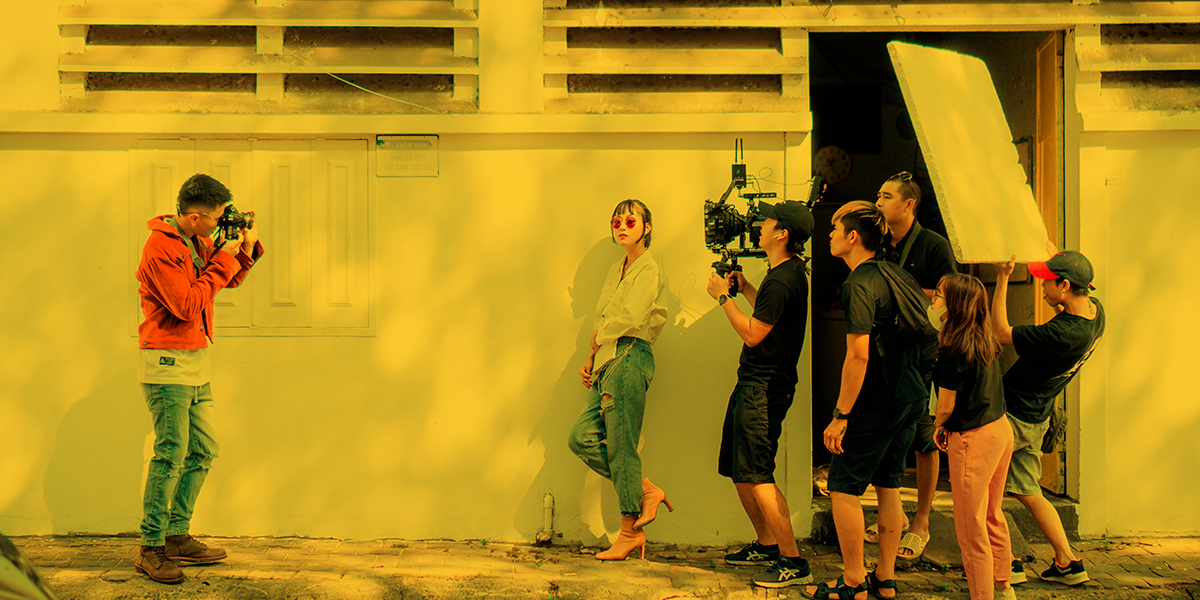
When I quit my office job and started working for myself, I discovered that on average, I had about three hours of extra free time every day.
It wasn’t because I had less to do. I was still managing a number of clients, and on top of that, trying to market and find new business all by myself.
I could get that work done in three or four hours a day—and because I no longer had a boss breathing down my neck or colleagues looking over my shoulder, I could close my laptop, walk away, and enjoy the time to myself.
Before I quit to become a freelancer, I used to drag out my work, because I needed to fill all the hours in the day to keep my manager happy.
I would take twice as long to finish a proposal, or sit and chit-chat with other managers in the meeting room just to eat up time until I could clock out.
There wasn’t a term for what I was doing back then, but today we have one: task masking.
It’s not a new problem, but it’s one that’s growing more and more prevalent in the modern workplace.
Warning: If you are task masking at your current job, you’re in danger.
It’s not good for you, it’s not good for your career, and it’s not good for your mental health.
So let’s take a look at what task masking is in today’s work culture, why it’s so problematic, and what you can do about it.
What is task masking?
Task masking is when you make yourself appear busier than you are to protect yourself from scrutiny from your employer or extra work assignments.
It’s hard to say where this term originated—it may be this Fortune article from early 2025, though it’s likely the phrase bubbled up on its own via social media before then.
Though the term is new, it’s not a new behavior.
Task masking takes many forms. The most common might be using multiple tabs on your work computer—you’ve got your email and Slack channel open for when colleagues can see your screen, and your personal social media pages, news articles, or shopping portals open for when you’re private.
Task maskers might also put on a display of exaggerated busyness—walking around the office in a hurry, or hunching over their laptop with a focused look on their face, or just loudly declaring that they are swamped when in reality they don’t have much on their plate.
Workers can still task mask even if they aren’t in the office. Jiggling your mouse to make yourself appear “online” on Teams or Slack is a form of task masking, as is intentionally waiting to respond to an email so that it looks like you have a lot of work on your plate.
In a recent survey of 3,000 employees, Workhuman found that 37% of respondents openly admitted to task masking in some form. Managers in the same study see it as a bigger issue, with nearly half of those interviewed saying it’s a problem on their teams.
Why do some people task mask and others avoid it? It all has to do with the workplace environment.
What causes workers to task mask?
Task masking doesn’t happen in a vacuum.
When employees feel the need to fake busyness, it’s usually a response to workplace conditions that make them feel unsafe or undervalued. The problem isn’t “lazy GenZ workers” like your parents might claim—it’s toxic work environments that push people into protective behaviors.
Let’s look at the real culprits.
Micromanagement
Nothing drives people to task mask faster than a boss who’s constantly looking over their shoulder. When managers focus more on how many hours you spend at your desk than the quality of your work, you learn to play the task-masking game.
@theworkmemewhisperer When will bosses learn that this doesn’t help? #workmemes #worklifebelike #workhumor #worklife #relatable #workplacehumor #officehumor #workhumortosurvive #workbelike #officelife #work ♬ Anxiety – Doechii
I’ve had bosses who would walk the floor several times a day just to see who was at their desk. One even commented when I took too many bathroom breaks. Under that kind of scrutiny, of course I’d keep extra tabs open and stretch my work thin—it was an act of self-preservation.
Micromanagers create an environment where appearance matters more than results, so people naturally adapt by focusing on appearances.
Related: 4 signs you’re dealing with a bad boss
Toxic competitive work culture
Some workplaces pit employees against each other, creating an environment where everyone’s trying to look like the hardest worker in the room.
These companies love to glorify hustle culture and promote people who “live to work.” They celebrate staff who send emails at midnight and respond on weekends.
In these environments, task masking becomes a competitive sport—who can look the busiest, sound the most overwhelmed, or complain about their workload most convincingly.
The irony is that the actual output often suffers because people are more focused on the performance of work than the work itself.
Burnout
Sometimes task masking is one of the big signs of burnout among staff. When you’re emotionally exhausted but can’t afford to quit, you find ways to protect your energy.
I’ve been there—after months of giving 110% and seeing no recognition, I hit a wall. My enthusiasm dried up, but my bills didn’t. So I found small ways to slow down and preserve my mental health while still appearing engaged.
For burned-out workers, task masking isn’t laziness—it’s a survival mechanism when they’ve already given too much.
Lack of fulfilling or engaging work
Let’s be honest: a lot of modern jobs just aren’t that engaging. When your role involves repetitive tasks that don’t use your full abilities, you finish faster than expected and have to fill the remaining hours somehow.
Related: 5 Signs You’ve Sold Your Soul to Work for Your Company
Many workers can complete their essential duties in far less time than a standard workday. But instead of being rewarded for efficiency with more flexible hours, they’re expected to look busy for the full eight (or more) hours.
Return to office mandates and task masking
Task masking may not be a new phenomenon, but there is something happening currently that is making it worse: Return to office mandates (RTO).
After getting a taste of autonomy during remote work, being forced back into cubicles feels like a major step backward—and many are responding by doubling down on performance over productivity.
Workplace strategist Jennifer Moss put it perfectly in a conversation with HR Brew:
“[Employers are] putting people back into the office [and] a lot of it has to do with control, and this idea that, if you’re present, that means you’re productive. So, it’s all about just the visibility of people, which is a false metric for us to measure productivity.”
She’s right. Many RTO mandates aren’t based on data showing improved results—because that’s not what the data shows.
A 2024 study out of Stanford found that employees who work two days a week at home are just as productive as their fully in-office coworkers.
For more on why RTO should be avoided (and the danger of quiet quitters), check out this TikTok from @resumeofficial:
@resumeofficial Now let me say I’m the BIGGEST HATER #returntooffice #returntowork #remotework #rto #corporate #work #workfromhome ♬ original sound – Morgan – Resume Writer 📝✨
Unfortunately, RTO policies are often based on making managers feel more comfortable. When your value is measured by your physical presence rather than your output, is it any surprise that workers focus on looking busy?
For workers caught in this trap, task masking becomes almost inevitable. If you know you could finish your work in four focused hours at home but are required to be at your desk for eight hours, you naturally find ways to spread that work out or fill the extra time with busywork that looks good to passing managers.
Related:
The double-edged sword of productivity
There’s a weird paradox in many workplaces today: Appearing unproductive will get you in trouble, but being too productive can actually make your life worse.
Task masking exists in this uncomfortable middle ground where workers try to look just busy enough—but not so efficient that they get piled with more work.
I learned this lesson the hard way early in my career. When I consistently finished projects ahead of deadline, my reward wasn’t praise or a raise—it was more work. My colleagues who took longer to complete the same tasks ended up with more reasonable workloads while I drowned in additional assignments.
The message was clear: efficiency gets punished, not rewarded.
This creates an impossible situation for workers. If you take your time and stretch out your tasks, you might get labeled as lazy or unmotivated.
But if you power through efficiently, you’re just setting yourself up for exploitation.
Neither option feels particularly good for your career or mental health.
The smartest workers quickly learn to “manage up” by carefully controlling the perception of their productivity. They save extra capacity for emergencies but never reveal exactly how quickly they can really work.
But when workers spend mental energy managing perceptions instead of doing meaningful work, everyone loses—the company, the customers, and especially the employees who just want to do good work and be valued for it.
Forget RTO. Work when and where you want. Yes, really.
Healthier alternatives to task masking
If you find yourself task masking regularly, it’s time for a change. While faking busyness might seem like your only option, there are healthier ways to navigate productivity expectations at work.
Have an honest conversation with your boss
Start by having an honest conversation with a manager you trust. Not all bosses are fixated on face time—some actually care about results. Try approaching your supervisor with specific examples of how you work best and what you’ve accomplished.
For example: “I noticed I completed the Johnson project in three days when I had focused blocks of time. Could we try a more flexible schedule where I’m measured on output rather than hours at my desk?”
Some managers will be receptive, especially if you frame it around improving your productivity rather than working less. Clear metrics help—suggest concrete ways to measure your performance that don’t depend on your physical presence or the appearance of constant activity.
Know when to move on
If your workplace culture is fundamentally toxic, no amount of conversation will fix it. If you’re stuck with micromanagers who value looking busy over actual results, it might be time to consider alternatives to the 9-5.
This realization was exactly what pushed me toward freelancing—I wanted to reclaim those hours I was wasting pretending to be busy.
If you’re leaning in this direction, be sure to check out our article on how to quit your job without damaging your future prospects.
Consider results-based careers
Some jobs are more prone to busy-work than others. Often, desk jobs lead to task masking because you have to be seated at your desk for a set amount of time—working in customer service, hospitality, or skilled labor may mean less busy work (and more real, meaningful work).
Sales is one career path worth considering if you want to escape the task masking cycle. In most sales roles, your results speak for themselves, and many sales positions offer significant autonomy. When you’re measured by your numbers rather than your desk time, the incentive to fake busyness disappears.
Explore entrepreneurship
Starting your own business is another option, though it comes with its own challenges. As a freelancer or entrepreneur, you’re accountable primarily for results—not for filling a certain number of hours. The freedom can be incredible, but it requires self-discipline and the ability to generate your own opportunities.
We have lots of articles to guide you if this is something you’re considering:
The bottom line is this: if you’re spending significant energy figuring out how to look busy at work rather than being productive, something needs to change.
Whether that’s a conversation with your boss, a shift to a results-oriented department, or a complete career change depends on your situation. But task masking is a symptom that shouldn’t be ignored—it’s your mind and body telling you that your current work arrangement isn’t sustainable.















